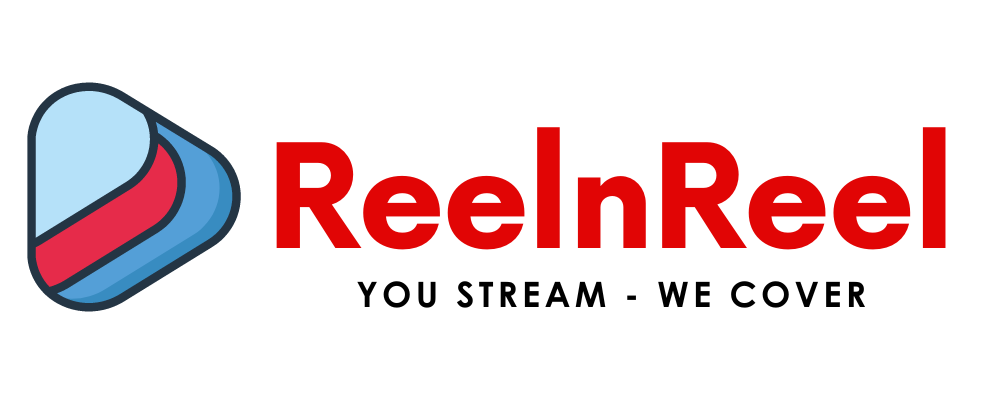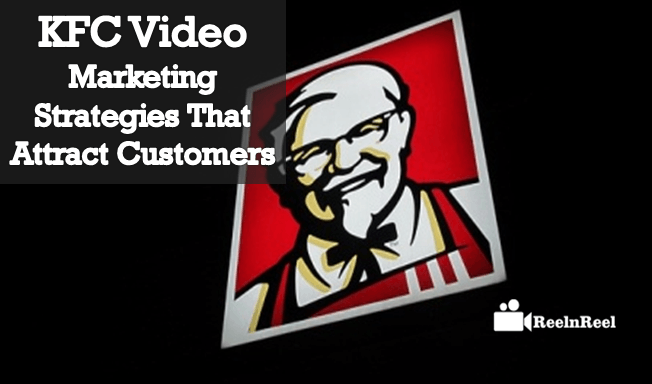In the highly competitive world of fast food, where customer loyalty is fleeting and brand visibility is everything, KFC has emerged as a standout player—not just for its crispy chicken, but for its creative, bold, and culturally adaptive video marketing strategies. While most brands follow conventional paths to promotion, KFC consistently breaks the mold by crafting campaigns that blend humor, satire, celebrity endorsements, and deep cultural resonance.
Whether it’s launching a fictional health-food parody to highlight indulgence, casting Hollywood stars like Rob Lowe as a space-bound Colonel Sanders, or localizing their brand with beloved actors like Ronaldo Valdez in the Philippines, KFC’s video campaigns do more than promote products—they spark conversations, entertain millions, and build brand love.
Each campaign is carefully crafted to deliver a mix of storytelling, emotional connection, and brand messaging that resonates with target audiences across geographies and generations. By merging global brand consistency with regional cultural flair, KFC has mastered the art of using video not just as a marketing tool, but as a storytelling medium that drives engagement and sales.
How KFC Leveraged Video Marketing to Become a Global Fast-Food Icon
In today’s digital-driven era, video marketing has become a critical component of successful brand promotion. From product launches to customer engagement and brand storytelling, businesses across industries are turning to video campaigns as their most effective marketing tool. Among the most successful adopters of this strategy is KFC (Kentucky Fried Chicken)—a brand that has leveraged video content to secure and strengthen its position as one of the world’s leading fast-food chains.
Changing Consumer Preferences in the Digital Age
Consumer preferences in the modern era have undergone a dramatic transformation. With evolving lifestyles, priorities have shifted across various domains such as food choices, fashion, and social identity. People now engage more deeply with brands that speak their language—visually, emotionally, and culturally.
KFC recognized this shift early and adapted its marketing strategy to align with digital-first audiences. The brand has mastered the art of crafting engaging, humorous, and sometimes bold video content that not only entertains but also communicates its value proposition effectively.
KFC: More Than Just Fast Food – A Global Brand Experience
KFC is no longer just a restaurant—it has become a global cultural icon in the fast-food industry. With a presence in over 150 countries, it serves millions of customers daily, but what sets it apart is not just its secret recipe or crispy chicken—it’s the emotional and cultural connection it builds with audiences.
This connection has been significantly shaped and amplified by video marketing strategies that tap into local cultures, viral trends, and humor, making KFC content highly shareable and memorable.
The Role of Video Marketing in KFC’s Global Success
So, what has driven KFC’s cult-like fan base and worldwide recognition? While product quality remains foundational, the strategic use of video marketing has played a pivotal role in expanding its global footprint. Here’s how:
1. Localized and Culturally Relevant Video Campaigns
KFC adapts its video content to resonate with regional cultures and consumer behavior. For instance:
- In India, campaigns highlight family meals and spicy flavors.
- In Japan, KFC is associated with Christmas traditions.
- In the U.S., the brand uses humor and nostalgia featuring rotating “Colonel Sanders” characters in its ads.
This localization strategy makes customers feel understood, helping build brand loyalty.
2. Humor and Virality as Key Drivers
KFC’s video ads are often infused with humor, parody, and unexpected twists. These qualities not only entertain but make the content highly shareable across social media platforms like YouTube, Instagram, and TikTok.
Examples include:
- The “11 Herbs & Spices” stunt on Twitter.
- “FCK” bucket apology ad during supply chain issues in the UK.
- Quirky Colonel Sanders campaigns featuring celebrities.
3. Storytelling That Connects
KFC doesn’t just sell chicken—it sells stories. Its videos often include short narrative formats that showcase everyday moments, values like togetherness, or humorous takes on fast-food cravings. These videos build emotional resonance and position KFC as part of its customers’ lifestyle.
4. Multi-Platform Distribution Strategy
KFC distributes its video campaigns across multiple channels—television, YouTube, social platforms, and even regional OTT platforms. By maintaining presence across all digital touchpoints, KFC ensures maximum reach and engagement.
5. Real-Time and Seasonal Campaigns
The brand capitalizes on real-time events and seasonal trends through time-sensitive, creative video ads that feel timely and relevant. This keeps KFC in the cultural conversation and increases brand visibility.
Key Strategic Elements Behind KFC’s Marketing Approach
KFC has emerged as one of the world’s most successful fast-food brands, not only because of its iconic product offering but also due to its well-structured and data-driven marketing strategies. The brand continuously refines its promotional tactics to adapt to changing consumer behavior, global competition, and technological advancements.
Below are the key strategic components (“plugins”) that KFC integrates into its marketing framework to maintain its competitive edge and expand its customer base:
Focusing on the Center of Competition
KFC does not operate in isolation. It recognizes that the fast-food industry is intensely competitive—with brands like McDonald’s, Burger King, Domino’s, and local QSR chains actively vying for market share. Instead of attempting to serve everyone, KFC clearly defines its unique selling proposition (USP)—its secret recipe chicken, quick service, and bold branding—and uses that as the foundation for all its messaging.
By identifying where consumer demand overlaps with its core strengths, KFC places itself at the center of competitive relevance. It studies competitors’ pricing models, advertising angles, and menu innovations to ensure it maintains both visibility and distinction.
Investing in Profitable, Performance-Driven Campaigns
KFC doesn’t just run campaigns for visibility—it carefully evaluates which advertising efforts lead to measurable business outcomes. These include:
- Campaigns with high ROI, such as limited-time offers (LTOs) and combo deals
- Brand awareness ads tied to festivals or local events
- Digital-first strategies focused on engagement, shares, and conversions
The brand also tests and iterates—launching pilot campaigns in specific regions and scaling only the ones that show consistent performance. This strategic testing allows KFC to deploy marketing budgets efficiently and prioritize initiatives that contribute to long-term profitability.
Assessing the Brand’s Current Promotional Status
KFC continually evaluates its market position and consumer perception in various regions through promotional audits, customer surveys, social listening, and competitor benchmarking. This helps the brand understand:
- Which promotions are most memorable or effective
- How consumers perceive KFC vs. competitors
- Whether the current promotional mix aligns with evolving market trends
These insights allow the marketing team to pivot quickly and refine messaging based on data rather than assumptions.
Identifying and Serving Customer Needs More Effectively
Understanding the pain points and desires of target customers is a cornerstone of KFC’s strategy. Through customer data platforms (CDPs), loyalty programs, and digital ordering behavior, KFC tracks what its consumers want—whether it’s affordability, convenience, spice level, or healthier options.
In response, it:
- Introduces new items like plant-based menus in select markets
- Offers family-sized meals and value packs
- Provides mobile ordering, curbside pickup, and quick delivery options
These efforts ensure that KFC is not just promoting to its customers—but actively solving their everyday food needs.
Analyzing the Target Customer Profile
KFC creates detailed customer personas based on demographic, psychographic, and behavioral data. These profiles help the brand understand:
- Who the key customers are (e.g., families, teens, young adults, budget-conscious individuals)
- When and how they prefer to engage (e.g., weekends, lunch breaks, mobile apps)
- What content or promotions resonate best with them (e.g., humor, price discounts, nostalgia)
With this information, KFC can personalize video ads, social media content, and loyalty promotions to match specific customer segments—enhancing engagement and retention.
Launching Inclusive, Broad-Reach Campaigns
KFC’s marketing efforts are intentionally inclusive, designed to appeal to a wide demographic range without losing brand identity. Its campaigns typically cater to:
- Teens – through pop culture references, influencer partnerships, and digital-first content
- Families and Children – via family meal bundles, entertaining ads, and kid-friendly offers
- Budget-Conscious Customers – by introducing low-cost combos, discounts, and value menus
This multi-tiered approach helps KFC expand its customer base while ensuring that each group feels catered to—both in product offerings and promotional messaging.
KFC Video Marketing Strategies: Rob Lowe as Colonel Sanders in the Georgia Gold Campaign
KFC has long been known for its innovative, humorous, and culturally relevant video marketing strategies. One standout example is the Georgia Gold Honey-Mustard BBQ campaign, which not only introduced a new product but also delivered a layered message through entertainment, satire, and star power.
In this campaign, famed American actor Rob Lowe took on the iconic role of Colonel Sanders, continuing KFC’s tradition of casting celebrities in quirky, memorable portrayals of its founder. Lowe’s performance added both credibility and humor to the campaign, helping the brand make a lasting impression on audiences.
Campaign Overview: Georgia Gold Honey-Mustard BBQ
The campaign was created to promote KFC’s new Georgia Gold Honey-Mustard BBQ Chicken, a limited-time menu item inspired by Southern-style barbecue flavors. The video ad featured Rob Lowe as a bold, futuristic version of Colonel Sanders, dressed in a gold space suit, humorously preparing to launch KFC’s “Golden Chicken” into space.
This over-the-top narrative served multiple strategic purposes:
Value Messaging: Through satire, the campaign poked fun at society’s obsession with material gold, suggesting that time and money are better spent on something truly satisfying—like Georgia Gold chicken.
Product Focus: The ad visually emphasized the product’s golden color, crispy texture, and rich, sweet-savory flavor profile.
Curiosity and Humor: By linking fried chicken with a space launch and themes of gold obsession, KFC created curiosity and entertained viewers in a way that aligned with pop culture.
Strategic Messaging: Killing the Obsession with Gold and Time
One of the campaign’s core messages was to challenge the viewer’s perception of value. By replacing the traditional desire for gold with a craving for golden chicken, the brand cleverly commented on consumer priorities.
Key ideas reinforced in the ad:
- Don’t waste your gold—eat ours.
- Forget chasing wealth—indulge in rich flavors.
- Gold is valuable, but great taste is priceless.
This dual messaging allowed KFC to promote its product while engaging the audience in a light-hearted critique of consumer culture.
The Role of Rob Lowe: A Celebrity-Driven Campaign
Rob Lowe’s participation in the campaign was a significant element. By portraying Colonel Sanders, he brought star power, humor, and a touch of absurdity to the brand message. His confident and comedic performance helped elevate the ad’s entertainment value and viral potential.
The use of celebrity actors like Rob Lowe:
Strengthens brand personality through humor and pop culture alignment
Increases viewer recall
Drives social media engagement
Impact and Consumer Engagement
The Georgia Gold campaign generated substantial buzz across digital platforms. Viewers shared the videos, engaged in conversations around the absurdity of “launching chicken into space,” and were drawn into stores to try the new menu item.
Outcomes included:
Reinforced positioning of KFC as a brand that blends quality food with fun, bold marketing
Increased sales of the Georgia Gold product line during its promotion period
Strong engagement metrics on YouTube and social media
KFC’s Clean Eating Burger Campaign: A Satirical Twist to Promote the Dirty Louisiana
In a highly competitive and health-conscious market, brands often find creative ways to stand out. KFC, known for its bold and unconventional video marketing strategies, launched the “Clean Eating Burger” campaign as a clever parody to promote its actual product—the Dirty Louisiana Burger. This campaign exemplifies how KFC uses satire, influencer personas, and social commentary to drive engagement and elevate product visibility.
The Setup: Introducing Figgy Poppleton-Rice
To roll out this campaign, KFC collaborated with a fictional clean-eating lifestyle influencer named Figgy Poppleton-Rice, portrayed by actress and comedian Bella Younger. Figgy is the embodiment of the health and wellness trend—soft-spoken, wellness-obsessed, and overly serious about superfoods, detoxes, and dietary purity.
In the campaign video, Figgy introduces what appears to be a “Clean Eating Burger”—a burger made entirely of raw vegetables, quinoa, cauliflower buns, and kale leaves. She presents it with exaggerated enthusiasm, as if this ultra-healthy, tasteless stack were the next big trend in conscious eating.
The Twist: Promoting the Dirty Louisiana
Midway through the campaign, the satire is revealed: there is no Clean Eating Burger. The real product KFC is promoting is the exact opposite—the Dirty Louisiana Burger. This indulgent burger is packed with fried chicken, spicy sauce, cheese, lettuce, and hash browns—a decadent contrast to the clean-eating narrative.
The brilliance of the campaign lies in this contrast. By first embracing the language and visual style of wellness influencers and then turning the concept on its head, KFC makes a humorous and memorable statement: sometimes, it’s okay to indulge.
Strategic Objectives and Messaging
The Clean Eating Burger campaign achieved several strategic goals:
Audience Targeting: By using a satirical character, KFC connected with a digitally native audience that is familiar with influencer culture and can appreciate a clever parody.
Disruption Through Satire: In a time when clean eating trends dominate health and food conversations online, KFC’s parody stood out by poking fun at the obsession with hyper-healthy food content.
Viral Engagement: The fictional influencer Figgy Poppleton-Rice was designed to go viral. Her exaggerated persona and perfectly curated wellness world made the campaign highly shareable and comment-worthy across platforms like Facebook, Twitter, and YouTube.
Product Contrast: The campaign effectively made the Dirty Louisiana Burger more appealing by contrasting it with a bland, unrealistic health-food alternative. This reinforced the idea of indulgence, flavor, and satisfaction.
Visual and Content Strategy
The video was shot in a mock influencer-style format, complete with soft lighting, pastel backgrounds, slow-motion vegetable stacking, and overly dramatic voiceover—all designed to mimic the aesthetics of food bloggers and wellness channels. The visuals made it seem legitimate at first glance, enhancing the effectiveness of the twist when the real burger was revealed.
KFC also supported the campaign with:
- Behind-the-scenes content
- Social media teasers
- Interactive posts asking fans if they’d “try” the Clean Eating Burger
This multi-channel execution ensured maximum reach and engagement.
The “Filipino Colonel” Campaign by KFC: Localizing Legacy with Humor and Heart
KFC has long been recognized not only for its iconic fried chicken but also for its creative and culturally adaptive marketing campaigns around the world. A prime example of this is the “Filipino Colonel” campaign, one of KFC Philippines’ most memorable and impactful promotional efforts. This campaign masterfully combined cultural relevance, humor, and brand heritage to create a lasting impression among Filipino audiences.
Campaign Overview: Ronaldo Valdez as the Filipino Colonel
In a bold and creative move, KFC Philippines reimagined Colonel Sanders—the legendary founder and face of the brand—as a Filipino version of the beloved character. Stepping into this role was Ronaldo Valdez, a veteran Filipino actor and comedian, known for his charming screen presence and humor.
Valdez portrayed the local Colonel with a perfect blend of comedy, authenticity, and cultural flair. Dressed in the signature white suit and glasses of the original Colonel Sanders, he brought a uniquely Filipino personality to the role—complete with local expressions, familiar humor, and a sincere tone that resonated with the audience.
Messaging and Themes
At the heart of the campaign was a message of dedication to service and food quality, delivered through a satirical and endearing performance. In the video ad, Ronaldo Valdez—as the Filipino Colonel—addresses the public, promising to continue serving delicious food with commitment and pride.
Despite its humorous tone, the campaign carried a few key strategic messages:
Customer-Centric Focus: The Filipino Colonel pledged to serve customers with full dedication, reinforcing KFC’s commitment to quality and satisfaction.
Local Connection: By appointing a respected Filipino figure, KFC made the brand feel more relatable and culturally embedded.
Respect for Tradition, with a Twist: The campaign maintained the visual identity of the original Colonel Sanders while reinterpreting it through the lens of Filipino culture.
Why the Campaign Was Memorable
This campaign stood out for several reasons:
1. Localization Done Right
Rather than simply adapting a global ad for a local audience, KFC Philippines created an original character that blended global branding with Filipino identity. This helped the brand strike a chord with viewers who saw themselves and their culture reflected in the messaging.
2. Humor and Emotional Warmth
Ronaldo Valdez’s comedic timing and warm delivery added a light-hearted, yet sincere tone to the campaign. His portrayal was humorous without being exaggerated, making it both entertaining and respectful.
3. High Recall and Shareability
The uniqueness of having a Filipino Colonel made the campaign go viral across social media and video platforms. Fans shared the ad widely, generating conversations, memes, and media coverage, thereby increasing brand visibility organically.
4. A Cultural Moment
For many viewers, the “Filipino Colonel” became more than just an ad—it became a cultural moment. It created a nostalgic and emotional connection that elevated brand loyalty, especially among long-time KFC customers in the Philippines.
Impact and Audience Response
The “Filipino Colonel” campaign was praised for its creativity, cultural intelligence, and entertainment value. It not only boosted engagement but also reinforced KFC’s brand values in a way that felt personal and authentic to Filipino audiences.
Outcomes included:
Enhanced perception of KFC as a brand that “understands” the Filipino market
Increased brand affinity and customer engagement
Strong positive sentiment on social media
Conclusion
These all are the video marketing strategies that have been implemented by the KFC which has the stunned the global market. After making read this you might get an idea of how to blast the business brand by launching video campaigns. KFC Video Marketing Strategies will project the good video marketing lessons for all the startups.
KFC Video Marketing Strategies that attract Customers: FAQs
What Makes KFC’s Video Marketing Strategy Stand Out?
KFC stands out for its bold, creative, and often humorous campaigns that blend storytelling, satire, and cultural relevance to build deep audience engagement.
How Does KFC Use Humor in Its Campaigns?
KFC frequently uses humor and parody, as seen in campaigns like the Clean Eating Burger, to grab attention, challenge trends, and create viral content that resonates with audiences.
What Was the Georgia Gold Honey-Mustard BBQ Campaign About?
This campaign featured Rob Lowe as Colonel Sanders, dressed as an astronaut launching chicken into space. It promoted indulgence while humorously commenting on society’s obsession with gold and materialism.
Why Did KFC Use Rob Lowe in the Georgia Gold Campaign?
Rob Lowe brought celebrity appeal, humor, and credibility to the role of Colonel Sanders, making the campaign memorable and widely shareable.
What Is the Message Behind the Georgia Gold Campaign?
The campaign humorously suggested that rather than chasing material wealth, consumers should indulge in the “gold” that really matters—KFC’s golden, flavorful chicken.
What Was the Clean Eating Burger Campaign?
A satirical video ad featuring fictional influencer Figgy Poppleton-Rice, the campaign mocked wellness trends to promote the real Dirty Louisiana Burger.
Was the Clean Eating Burger a Real Product?
No. The Clean Eating Burger was fictional. It was used as a contrast to highlight the indulgent and flavorful Dirty Louisiana Burger.
Who Is Figgy Poppleton-Rice?
She’s a fictional wellness influencer character created by KFC to satirize clean eating culture. Played by comedian Bella Younger, she was central to the parody campaign.
How Did KFC Use Satire Effectively in the Clean Eating Campaign?
KFC mimicked wellness influencer aesthetics and language, only to reveal the absurdity of it through a dramatic contrast with their actual indulgent offering, generating humor and social buzz.
What Was the Impact of the Clean Eating Burger Campaign?
The campaign achieved high engagement across social media platforms, generated viral discussions, and increased interest in the Dirty Louisiana Burger.
What Was the “Filipino Colonel” Campaign?
In this localized campaign, veteran actor Ronaldo Valdez portrayed a Filipino version of Colonel Sanders, pledging to serve customers with dedication and humor.
Why Was the Filipino Colonel Campaign Effective?
It resonated deeply with local audiences by blending cultural familiarity with brand heritage, making KFC feel both global and personal.
How Did Ronaldo Valdez Add Value to the Filipino Colonel Campaign?
His comedic timing, local appeal, and authentic delivery helped connect the brand with Filipino values and humor, increasing emotional resonance and brand loyalty.
Is Localized Advertising a Core Part of KFC’s Global Strategy?
Yes. KFC localizes many of its video campaigns to reflect regional cultures, using local celebrities, languages, and humor to connect more deeply with specific markets.
How Does KFC Balance Global Brand Identity with Local Campaigns?
KFC retains core branding elements (like Colonel Sanders) while adapting tone, casting, and messaging to fit local cultures and consumer preferences.
How Do KFC’s Campaigns Go Viral?
KFC designs its campaigns for digital platforms using high-impact visuals, humor, celebrity appeal, and culturally relevant content that audiences want to share.
What Role Do Celebrities Play in KFC’s Video Marketing?
Celebrities like Rob Lowe and Ronaldo Valdez increase viewer attention, credibility, and media coverage, making the campaigns more relatable and entertaining.
What Is KFC’s Approach to Product Launch Campaigns?
KFC turns product launches into storytelling moments, using unexpected angles (like space missions or fake influencers) to grab attention and build hype.
What Platforms Does KFC Use for Video Distribution?
KFC uses a multi-platform strategy, including YouTube, Facebook, Instagram, Twitter, and regional OTT platforms to maximize reach and engagement.
What Can Other Brands Learn from KFC’s Video Marketing Strategy?
They can learn the power of culturally intelligent storytelling, the impact of humor, the effectiveness of character-based campaigns, and the value of mixing entertainment with marketing goals.





